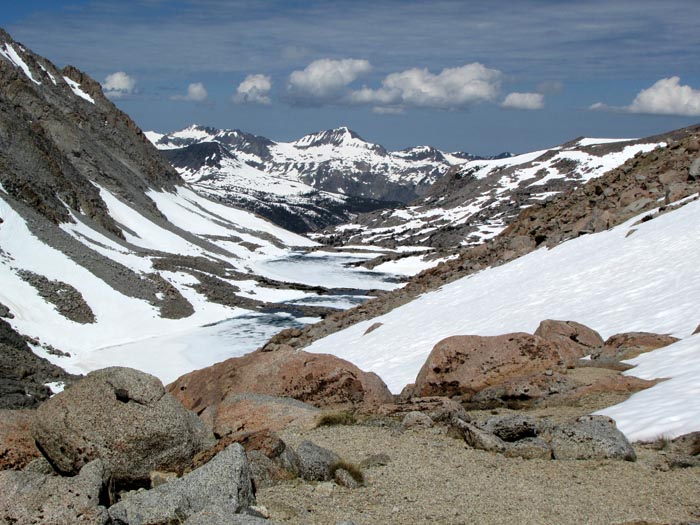
In 2011 I could see Mt. Henry in the distance (center of photo) as I sloshed around in a melting Darwin Canyon.
This year we finally climbed Mt. Henry named for physicist Joseph Henry, who according to Peter Browning in Place Names of the Sierra Nevada, was "largely responsible for creation of the US Weather Bureau."
From the southwest, Mt. Henry is difficult to see until one is very close since the trail from Courtright Reservoir is forested. Because of Lodgepole pine succession Long Meadow is shorter than it was when given its name.
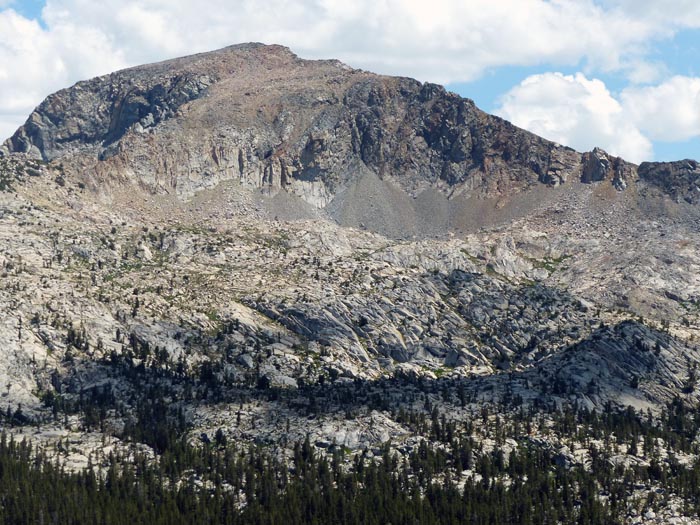
Mt. Henry from the southwest in 2018 from the top of Fleming Mountain.
Richard Stover and I arrived at the Maxon trailhead about 4 p.m. after driving from Santa Cruz and hiked a few miles to Chamberlain's cabin, an old cow camp. The next day we had planned to hike to Fleming Lake, but monsoon rains caused us to set up camp just in time a few miles short. Heavy rain. It rained every day we were above 9000 feet after that.
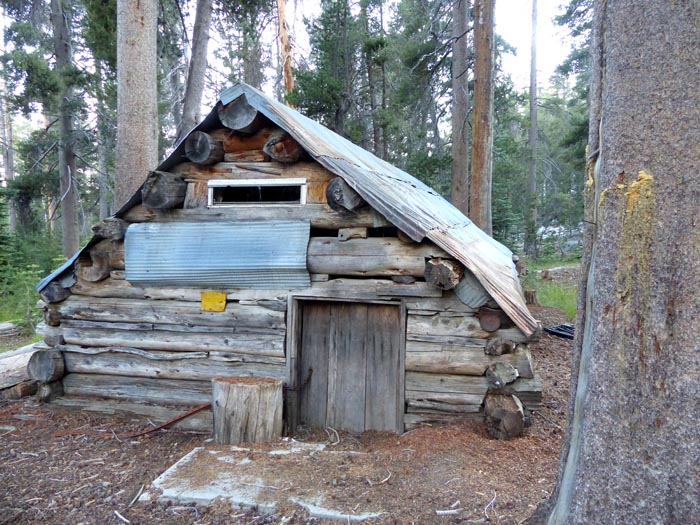
Chamberlain's cabin. The cabin has settled, and the door cannot be opened any more.
The next morning we planned to hike to Turf Lakes at the foot of Mt. Henry. We crossed the outlet of Lower Indian Lake and started cross country toward the mountain. On the way we spotted the youngest fawn we had ever seen. The little newborn did not heed its mother's warning to remain still. It saw us, foolishly stood up on wobbly feet then tumbled over. Mom was nowhere to be seen, likely off to browse after her labor. Had we been bears, the fawn would have been lunch. Instead it collapsed in a heap, and we left it alone.
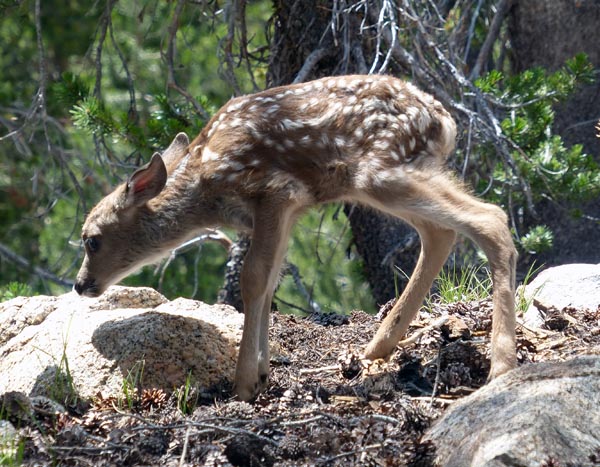
With dark clouds and thunder all around, we set up camp early at a convenient tarn about a mile from our Turf Lakes destination. More rain.
The flower display was wonderful every day: Leopard lilies, Shooting star, and Delphinium in the wetlands, Asters, various Lupine, Mountain spiraea, and more. On the climb the aromatic smell of the Mountain pennyroyal was almost overpowering.
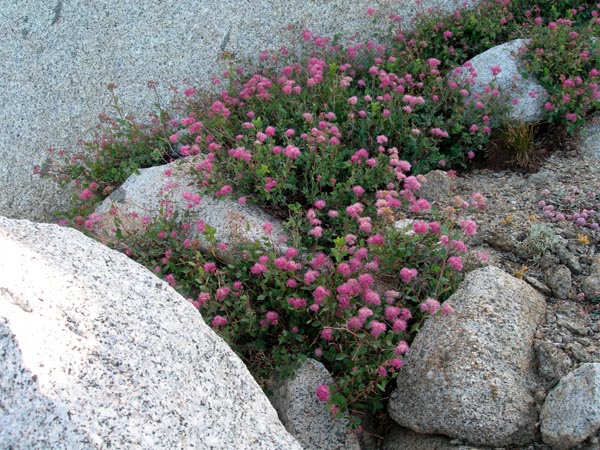
Mountain spiraea
Bright and early the next day we headed for Mt. Henry. From the tarn we climbed about 700 feet to the west ridge. As we worked our way eastward along the ridge, the climbing went from easy to increasingly airy. I began to hear high-pitched sounds coming from Richard. These were his uncomfortable signals. Although the climbing was not difficult, Richard was unhappy with the exposure and even more worried when I climbed ahead to scout the route.
Below us, the exit from the ridge was easy. So we went down. We decided to look for the chute other climbers have mentioned. As we traversed to the west below the ridge, we spotted a narrow chute. This must be it.
But the route became more exposed as we climbed higher. There were ducks everywhere. Previous climbers seemed to traverse to the east. Perhaps there was another chute we couldn't see. By then I was getting tired, a bit cranky, and the weather was deteriorating. "Let's go down and have a snack," I said, "and see if there is another chute."
There was! After a rest we started up the second chute.
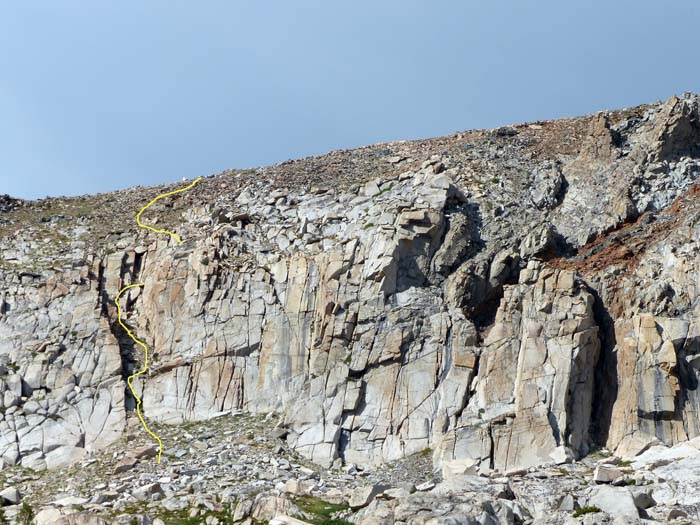
The yellow line shows our route up the chute.
We reached the summit at 1:20 p.m.
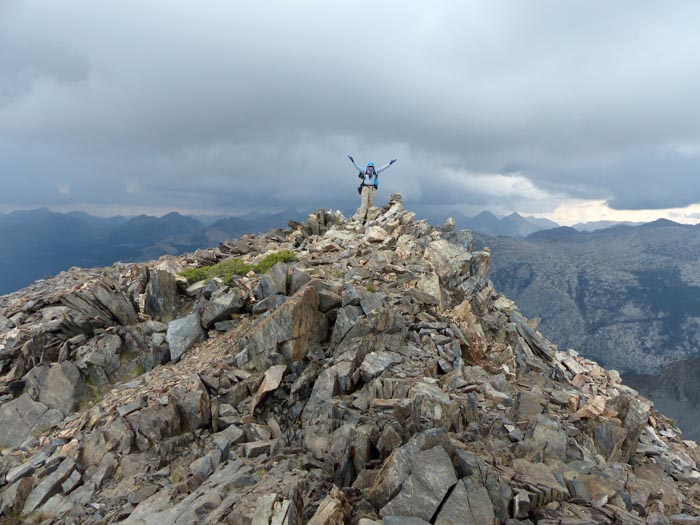
Debbie on the summit.
The weather was closing in. The view was wonderful. Tier after tier of mountains stretched to the north and east as in a painting.
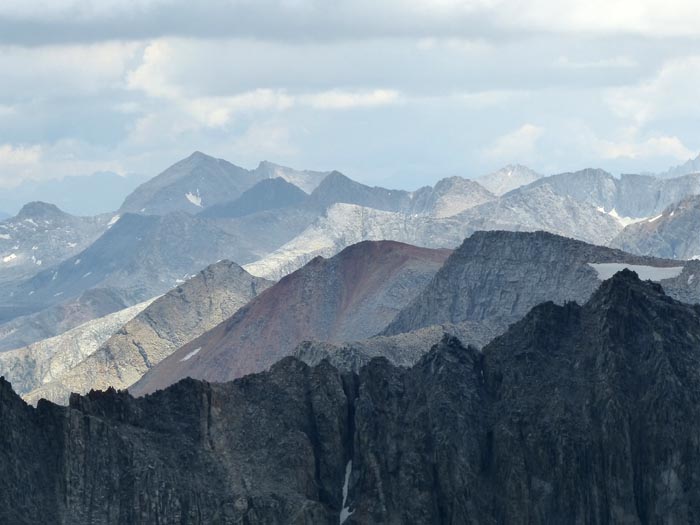
Looking southeast from summit of Mt. Henry. Photo by Richard Stover
We couldn't tarry. I quickly signed the register, Richard took some photos, and we started down in less than 15 minutes. Before we reached the top of the chute, there was a bright flash and then thunder bouncing off the rocks.
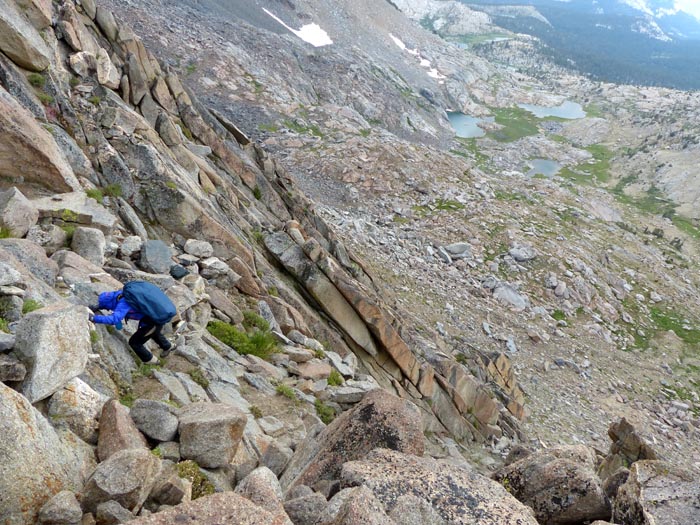
Debbie descending. Turf Lakes are below.
It started to rain and then lightly hail. We had stopped to don rain gear. The rocks were slippery. "Let's get down this chute," I thought.
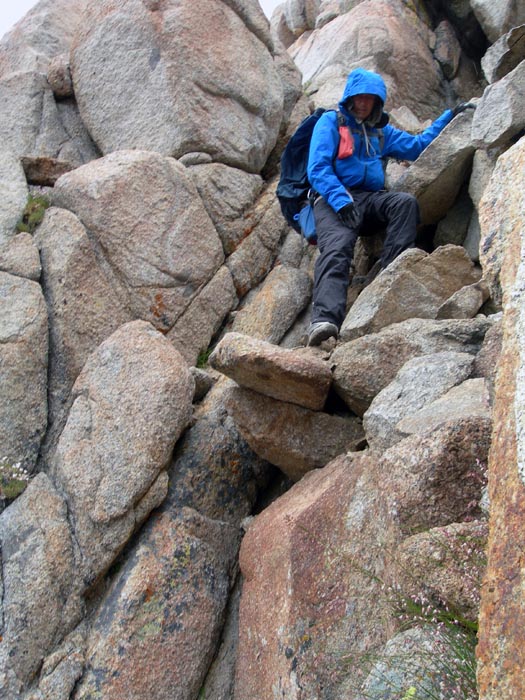
Richard descending the chute in light rain.
Once on more level ground we found a shallow overhang, broke out our space blankets for shelter, and sat out the storm. It was over in an hour. The sun came out, and we had an enjoyable walk back to our camp.
We took the next day off to rest up. I never used to take layover days. Now I schedule them on a regular basis. Makes me realize I'm not 50 anymore.
Ah, layover. We rested, rinsed out our clothes, bathed, and got to know the residents of our tarn better. The highlight was a Mountain Garter Snake that we saw several times. It seemed to be hunting for tadpoles of which there were many. And of course there was the obligatory afternoon rain shower.
On Tuesday we packed up, walked down to Lower Indian Lake, and climbed Fleming Mountain. This little bump proved more challenging than it looked. We climbed the hard way up to the saddle from Lower Indian Lake then south over three piles of boulders to the summit. From a bowl to the west, it is an easy jaunt. On our route we spent a lot of time clambering over huge boulders.
Sad to say we found lost balloons on both Mount Henry and Fleming. How do we educate folks that escaped helium balloons are a threat to wildlife and the environment?
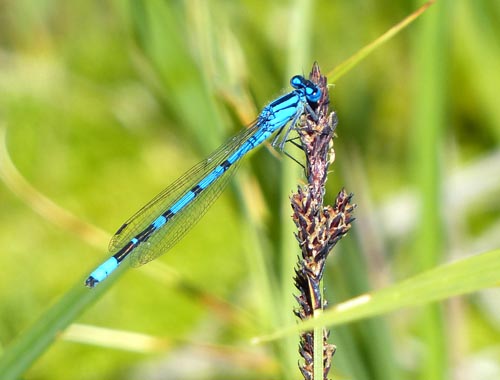
We saw this lovely Damselfly at Lower Indian Lake.
We took a much easier way down and then hiked past Fleming Lake for a dry camp that night at the site of our "rain camp" five days before on the way in. The next day we hiked back to our car and the waiting root beers in the trunk.